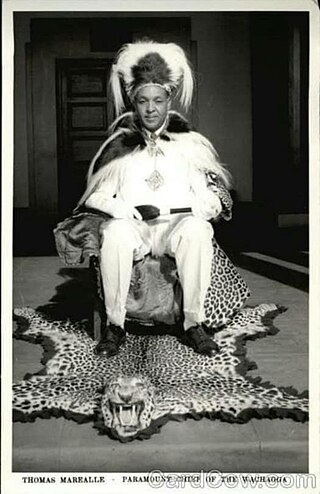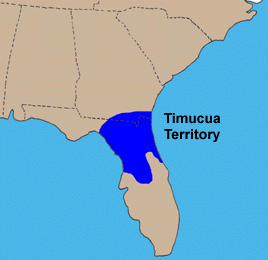
The Chaga or Chagga are Bantu-speaking indigenous Africans and the third-largest ethnic group in Tanzania. They traditionally live on the slopes of Mount Kilimanjaro and eastern Mount Meru in both Kilimanjaro Region and eastern Arusha Region. Their relative economic wealth comes from favorable fertile soil of mount Kilimanjaro and successful agricultural methods, which include extensive irrigation systems, terracing, and continuous organic fertilization methods practiced for thousands of years.

The Nyamwezi, or Wanyamwezi, are one of the Bantu groups of East Africa. They are the second-largest ethnic group in Tanzania. The Nyamwezi people's ancestral homeland is in parts of Tabora Region, Singida Region, Shinyanga Region and Katavi Region. The term Nyamwezi is of Swahili origin, and translates as "people of the moon" on one hand but also means "people of the west" the latter being more meaningful to the context.

The Zaramo people, also referred to as Dzalamo or Saramo, are a Bantu ethnic group native to the central coast of Tanzania, particularly Dar es Salaam Region and Pwani Region. They are the largest ethnic group in and around Dar es Salaam, the former capital of Tanzania and the 7th largest city in Africa. Estimated to be about 0.7 million people, over 98% of them are Muslims, more specifically the Shafi'i school of Sunni Islam. Their culture and history have been shaped by their dwelling in both urban and rural landscapes.
The Nyakyusa are a Bantu ethnolinguistic group who live in the fertile mountains of southern Mbeya Region of Tanzania. They speak the Nyakyusa language, a member of the Bantu language family. In 1993 the Nyakusa population was estimated to number 1,050,000, with 750,000 living in Tanzania. Nyakyusa are marked as highly educated and eager agriculturists. The Nyakyusa are colonising people where success and survival depended on individual effort. Nyakyusa have managed to collect vast wealth from trade and agriculture than any tribe in Tanzania..

The Lugbara are a Central Sudanic ethnic group who live primarily in the West Nile region of Uganda, in the adjoining area of the Democratic Republic of the Congo (DRC) with a few living in South Sudan. They speak the Lugbara language, a Central Sudanic, Nilotic language similar to the language spoken by the Madi, with whom they also share many cultural similarities. The Lugbara are famed for their beauty, tenacity and craftsman ship.
The Sangu, at times called Rori, are an ethnic and linguistic group based in the Usangu Plain of Chunya District of Mbeya Region, Tanzania. By 1907 the Sangu numbers were thought to be about 30,000. In 1987 the Sangu population was estimated to number 75,000.
The Safwa are an ethnic and linguistic group based in the mountains of the Mbeya Region, Tanzania. The Safwa language is a member of the large Niger–Congo language family group. Alternate names for Safwa are Ishisafwa, Cisafwa, and Kisafwa. Its dialects are Guruka, Mbwila, Poroto, and Songwe. ISO 639-3 language code is sbk.
The Nyiha are a Bantu ethnolinguistic group based in Mbeya Region, Tanzania and northeastern Zambia. In 1993 the Nyiha population was estimated to number 626,000, of which 306,000 were in Tanzania and 320,000 were in Zambia.

The Turu are an ethnic and linguistic group based in the Singida Region of north-central Tanzania who speak Bantu language Kinyaturu. In 1993, the Turu population was estimated to number 556,000.. The current population of the Turu is now over 1,000,000. They speak the Turu language.
The Fipa are a Bantu ethno-linguistic group based in the Sumbawanga Rural and Nkasi districts of Rukwa Region in southwestern Tanzania speaking the Fipa and Mambwe languages. In 1992, the Fipa population was estimated to number 200,000, reduced to 195,000 in the 2002 census.
The Mambwe and Lungu peoples living at the southern end of Lake Tanganyika in Tanzania and Zambia speak a common language with minor dialectical differences. Perhaps half of the Fipa people to their north speak it as a native language. When spoken by the Fipa, it is called "Fipa-Mambwe"; this is also the term for the branch of Bantu languages which includes Fipa and Mambwe-Lungu.

The Timucua were a Native American people who lived in Northeast and North Central Florida and southeast Georgia. They were the largest indigenous group in that area and consisted of about 35 chiefdoms, many leading thousands of people. The various groups of Timucua spoke several dialects of the Timucua language. At the time of European contact, Timucuan speakers occupied about 19,200 square miles (50,000 km2) in the present-day states of Florida and Georgia, with an estimated population of 200,000. Milanich notes that the population density calculated from those figures, 10.4 per square mile (4.0/km2) is close to the population densities calculated by other authors for the Bahamas and for Hispaniola at the time of first European contact. The territory occupied by Timucua speakers stretched from the Altamaha River and Cumberland Island in present-day Georgia as far south as Lake George in central Florida, and from the Atlantic Ocean west to the Aucilla River in the Florida Panhandle, though it reached the Gulf of Mexico at no more than a couple of points.

The Agua Dulce or Agua Fresca (Freshwater) were a Timucua people of northeastern Florida. They lived in the St. Johns River watershed north of Lake George, and spoke a dialect of the Timucua language also known as Agua Dulce.
The Yustaga were a Timucua people of what is now northwestern Florida during the 16th and 17th centuries. The westernmost Timucua group, they lived between the Aucilla and Suwannee Rivers in the Florida Panhandle, just east of the Apalachee people. A dominant force in regional tribal politics, they may have been organized as a loose regional chiefdom consisting of up to eight smaller local chiefdoms.
Fipa is a Bantu language of Tanzania. It is spoken by the Fipa people, who live on the Ufipa plateau in the Rukwa Region of South West Tanzania between Lake Tanganyika and Lake Rukwa. The ethnic group of the Fipa people is larger than the group of Fipa language speakers. On the Tanzanian side, people who speak Mambwe-Lungu may identify as Fipa and consider their language to be a dialect of Fipa. Lungu and Mambwe are also spoken in Zambia where they are considered languages and their speakers are considered to be ethnic groups in their own right, although linguists consider Lungu and Mambwe to be dialects of a single language. There are three dialects: Milanzi, Kwa (Ichikwa) and Nkansi.
Lambya (Rambia) is a Bantu language of Tanzania and Malawi. In Northern Malawi it is spoken particularly in the Chitipa District.
The Vambunda are a Bantu people who, during the Bantu migrations, came from the north to south-eastern Angola and finally Barotseland, now part of Zambia. Their core is at present found in the south-east of Angola from the Lunguevungu river in Moxico to the Cuando Cubango Province.
The Lokono or Arawak are an Arawak people native to northern coastal areas of South America. Today, approximately 10,000 Lokono live primarily along the coasts and rivers of Venezuela, Guyana, Suriname, Barbados and French Guiana. They speak the Arawak language, the eponymous language of the Arawakan language family, as well as various Creole languages, and English.
Mwene Mbonwean Sultanate of Ujiji is a subnational Monarchy in Ujiji town, Kigoma Region, western Tanzania. The seat of the local Sultanate is Busaid which was called so from the name of the dynasty of both the Zanzibar Sultanate and Oman which once ruled Ujiji under Arab-Swahili Liwalis, the post Arab name of Busaid for Ujiji proper is still used by the locals as "Busaidi".






